Step into the world of the extinct dodo with our captivating collection of free dodo drawings and illustrations. Perfect for educators, artists, and history buffs, these high-quality images from the public domain capture the essence and mystery of this iconic bird.
I have been thinking about compiling a collection of Dodo drawings for a while. Last week someone emailed me with a request for some dodo pictures. So after a bit of research, I have come up with this collection of images of the extinct bird.
I first learned about the dodo in school. I think many of us were taught the same lesson about man’s destruction of nature by hunting the dodo into extinction.
This was the first recorded incident of human involvement resulting in the disappearance of an entire species. Since then, the poor dodo has become a symbol of extinction and obsolescence.
Hence the expression “dead as a dodo”, which means unquestionably dead or obsolete.
The dodo bird also is popular and well known from its place in the story of Alice’s Adventures in Wonderland,
Fun Facts About the Dodo
Before sharing the dodo drawings and illustrations here are some facts about these fascinating birds.
- The dodo is an extinct flightless bird.
- The first recorded mention of the dodo was by Dutch sailors in 1598. The last widely accepted sighting of a dodo was in 1662.
- It was endemic to the Island of Mauritius.
- Due to its isolation, it was believed that the dodo was fearless of humans. This combined with its lack of flight made it easy prey for sailors and contributed to the bird’s rapid extinction.
- The closest living relative of the dodo is the Nicobar pigeon.
- The dodo had a brownish-grey plumage, yellow feet a tuft of tail feathers, and two small useless wings.
- It had a grey naked head with a distinctive yellow and green beak.
- Bigger than a turkey the dodo weighed about 23 kg (about 50 pounds).
- Dodo’s ate mainly dropped fruit, nuts, and seeds. It used gizzard stones to help it digest its food.
The Free Dodo Drawings and Illustrations
To download the dodo drawing you want to your device, click on the title above that illustration. A higher resolution image of the dodo will open as a new window on your browser.
Click on that image with your mouse and you will have the option to save it to your device.
The poet Hilaire Belloc included the following poem about the dodo in his Bad Child’s Book of Beasts from 1896:
The Dodo used to walk around,
And take the sun and air.
The sun yet warms his native ground –
The Dodo is not there!
The voice which used to squawk and squeak
Is now forever dumb –
Yet may you see his bones and beak
All in the Mu-se-um.
A dodo drawing from the book “The Wonders of The World in Nature and Art”, Edited by Henry Ince, 1839.
A John Le Keux (1783 – 1846) etching of a dodo from the Welcome Collection.
This 1844 illustrations is from the French book “Atlas de Zoologie, ou collection de figures d’Animaux nouveaux, ou peu connus avec une explication.”
This title translates as “Atlas of Zoology, or collection of figures of new or little-known Animals with an explanation.”
Didus ineptus is just another name for the dodo. These two drawings are from the collection at Amsterdam University.
Two more dodo illustrations from the University of Amsterdam collection.
A dodo illustration from the 1907 book “Extinct birds: an attempt to unite in one volume a short account of those birds which have become extinct in historical times: that is, within the last six or seven hundred years: to which are added a few which still exist, but are on the verge of extinction“. By Lionel Walter Rothschild.
8. Collection of Dodo Drawings
Another print from the Extinct bird book above. With the following text relating to these drawings.
The dodo (Raphus cucullatus) was a flightless bird endemic to the Indian Ocean island of Mauritius.
- No. 1. Outline of Dodo in Roelandt Savery’s picture at Berlin. Vide antea No. 2 in the List of Paintings.
- No. 2. Outline of picture by Roelandt Savery in the British Museum. Vide antea No. 9 in the List of Paintings.
- No. 3. Outline of Dodo in Jacob van Neck’s Voyage, Plate 2 (1598).
- No. 4. Outline of Roelandt Savery’s Dodo, Vienna. Vide antea No. 4 in the List of Paintings.
- No. 5. Outline of Dodo in Broeck’s Voyage (Peter van Broeck’s Voyage, 1617).
- No. 6. Outline of Dodo in Piso’s additions to Jacob Bontiu’s Oriental Natural History, 1658.
- No. 7. Outline of Dodo in Sir Thomas Herbert’s Relation of some yeares Travels, 1626.
- No. 8. Outline of Dodo in Clusius Exoticorum libri decem, 1605.
- No. 9. Outline of Dodo in Joan Nievhof’s Gedenkwaerdige Zee and Lantreize, 1682.)
Roelant Savery a Dutch painting of the Dodo 1629.
10. 1780 German Dodo Illustration
From the book, “Charitable natural history of the animal kingdom: in it, the strangest and most useful animals are described in a systematic order and all sexes are presented in images according to nature / made out by D. Georg Heinrich Borowski.”
From the 1776 Dutch book “Collection of exotic and rare birds.“
Painting by the Mughal artist Ustad Mansur from c 1625, which may be one of the most accurate depictions of a live dodo.
Two live specimens were brought to India in the 1600s according to Peter Mundy, and the specimen depicted might have been one of these.
Other birds depicted are Loriculus galgulus (upper left) Tragopan melanocephalus (upper right), Anser indicus (lower left) (although the pose and pattern suggests a hybrid, possibly related to the Indian runner duck – note upright posture, long neck and smaller size although this is clearly not to scale going by the lorikeet) Pterocles indicus (lower right).
13. 17th Century Dutch Dodo Painting
‘Dronte’, was the Dutch 17th-century name for the dodo.
One of the most famous and often-copied paintings of a Dodo specimen, as painted by Roelant Savery in the late 1620s.
The image came into the possession of the ornithologist George Edwards, who later gave it to the British Museum, hence the name. The bird swallowing a frog in the lower right may be the likewise extinct Red Rail. It has also been suggested that the two parrots are the extinct Lesser Antillean Macaw (left) and Martinique Macaw (right).
This drawings of two dodos is from the ship’s log of the Dutch ship ‘Gelderland’ (1601-1603).
This dodo drawing is on one of Oliver Goldsmith’s vintage nature posters from his book “A History of the Earth and Animated Nature.”
Other Related Posts
Don’t forget to check out the many other vintage bird illustrations on Pictureboxblue. This collection includes birds such as penguins, flamingos, and cockatoos to name a few.
Don’t forget to look at all the wonderful popular natural history posters on the site too.

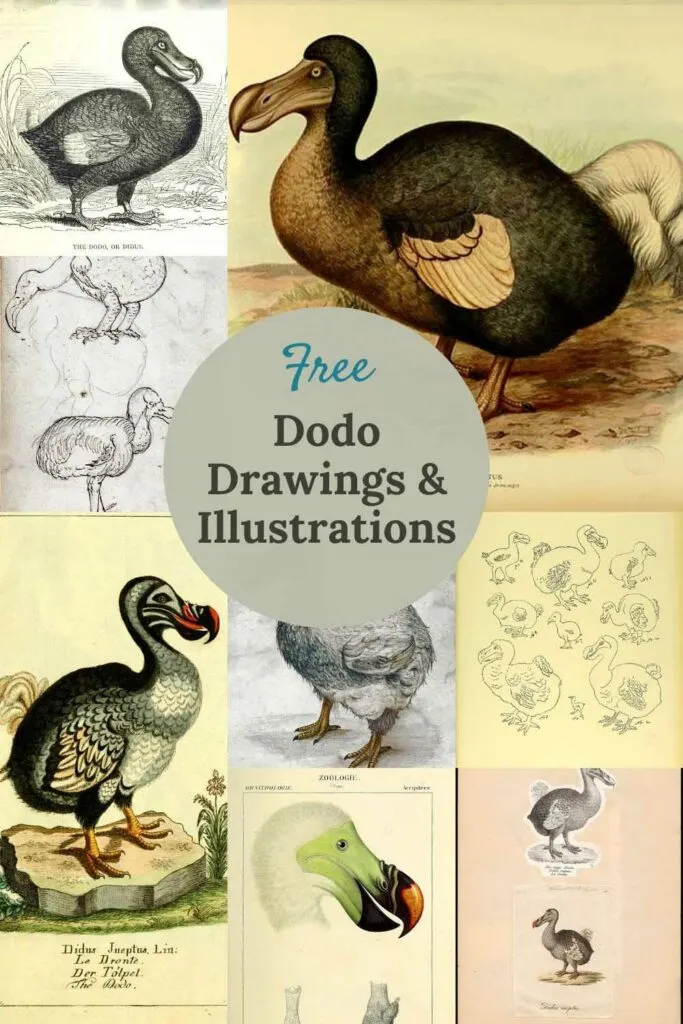
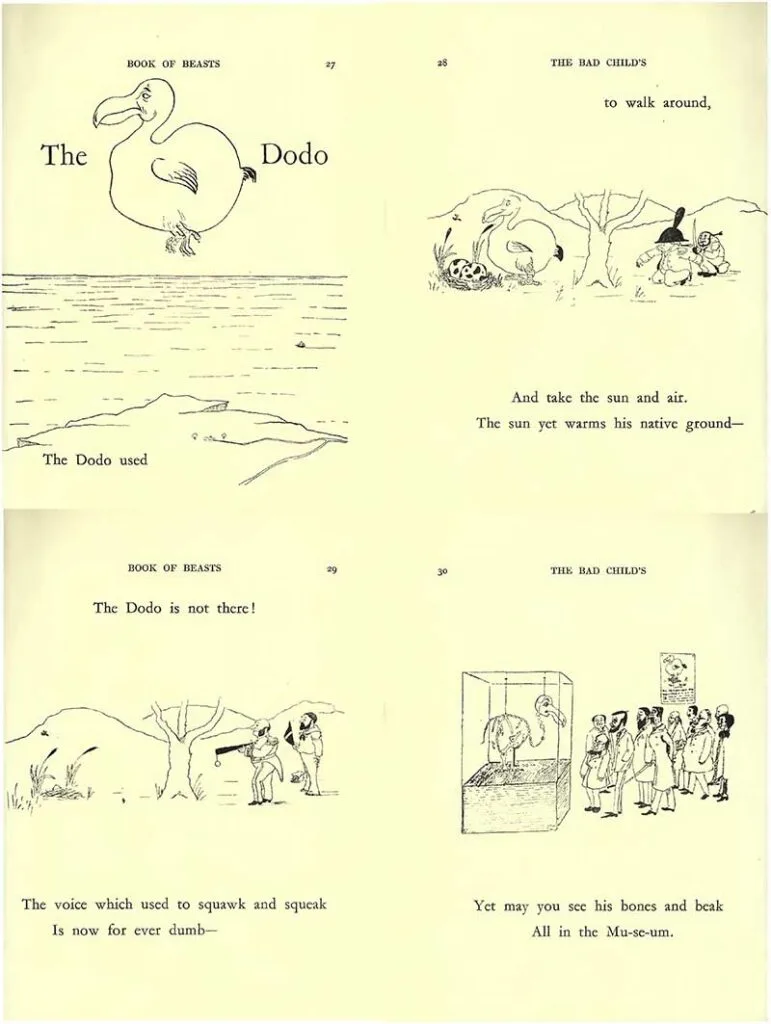
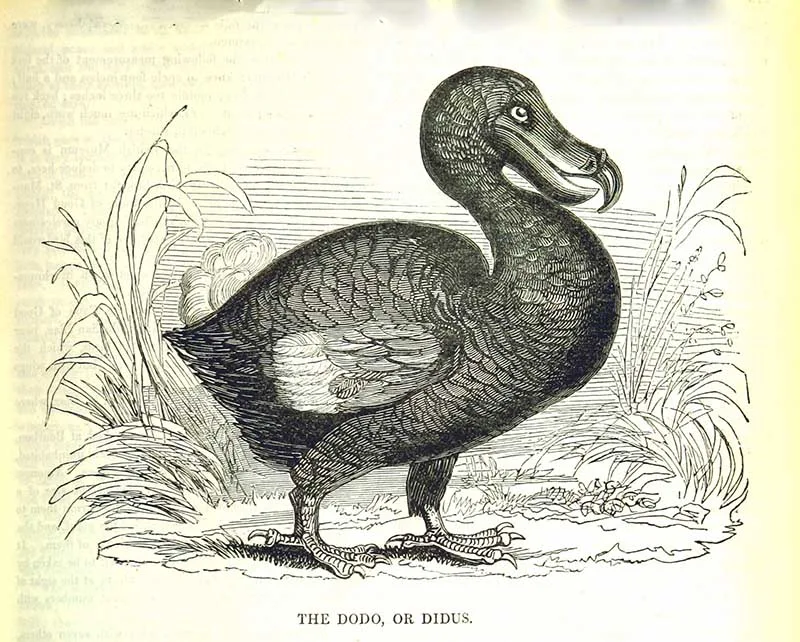
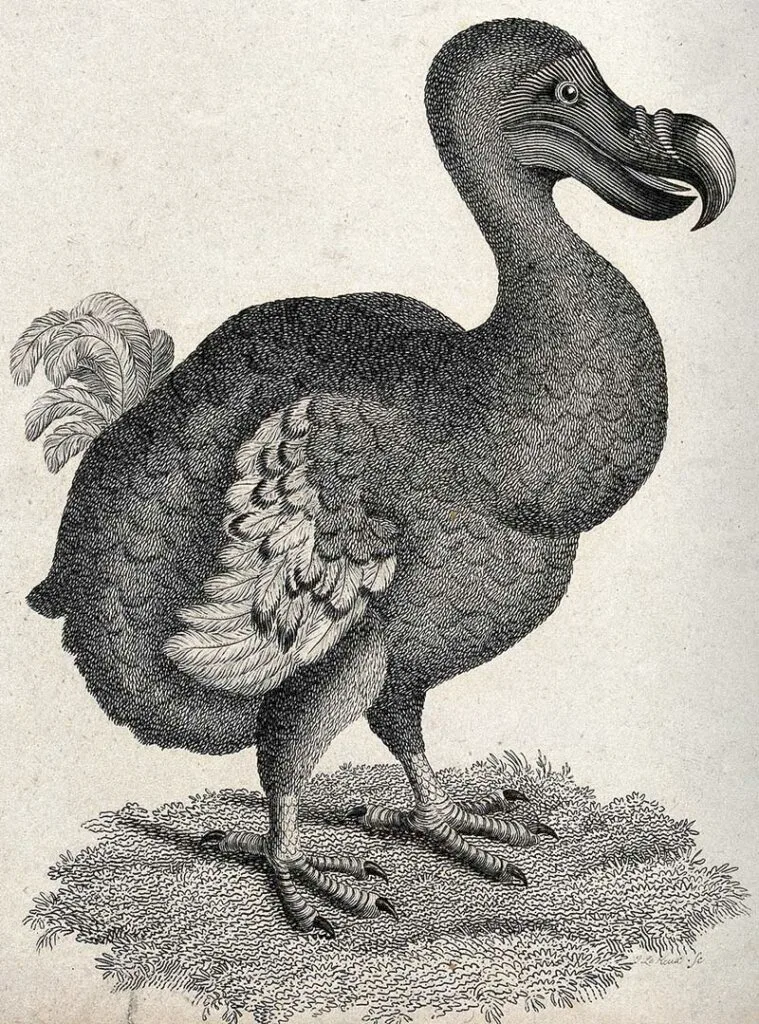
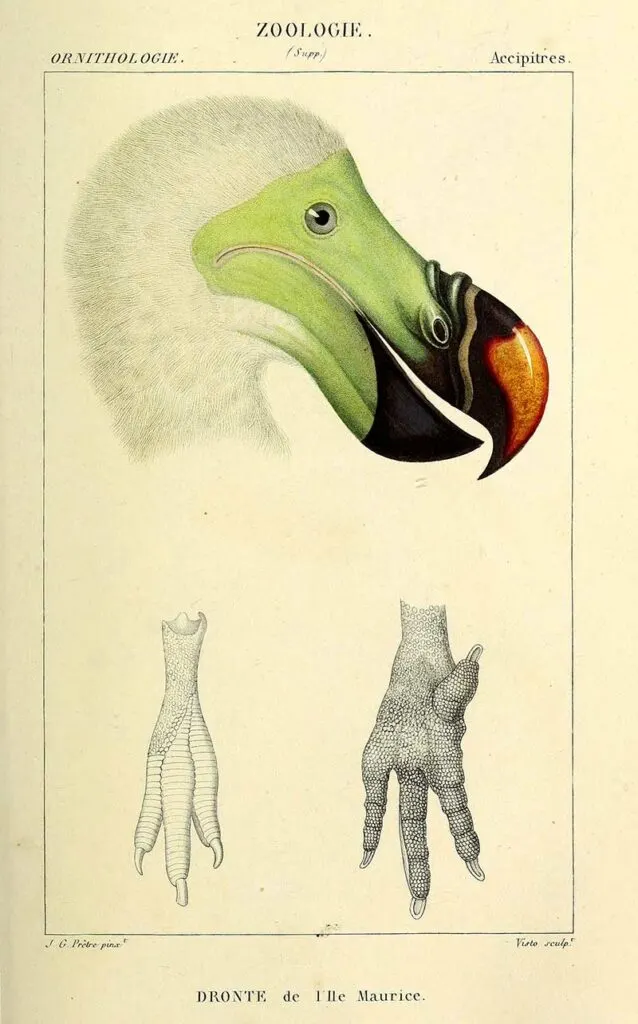
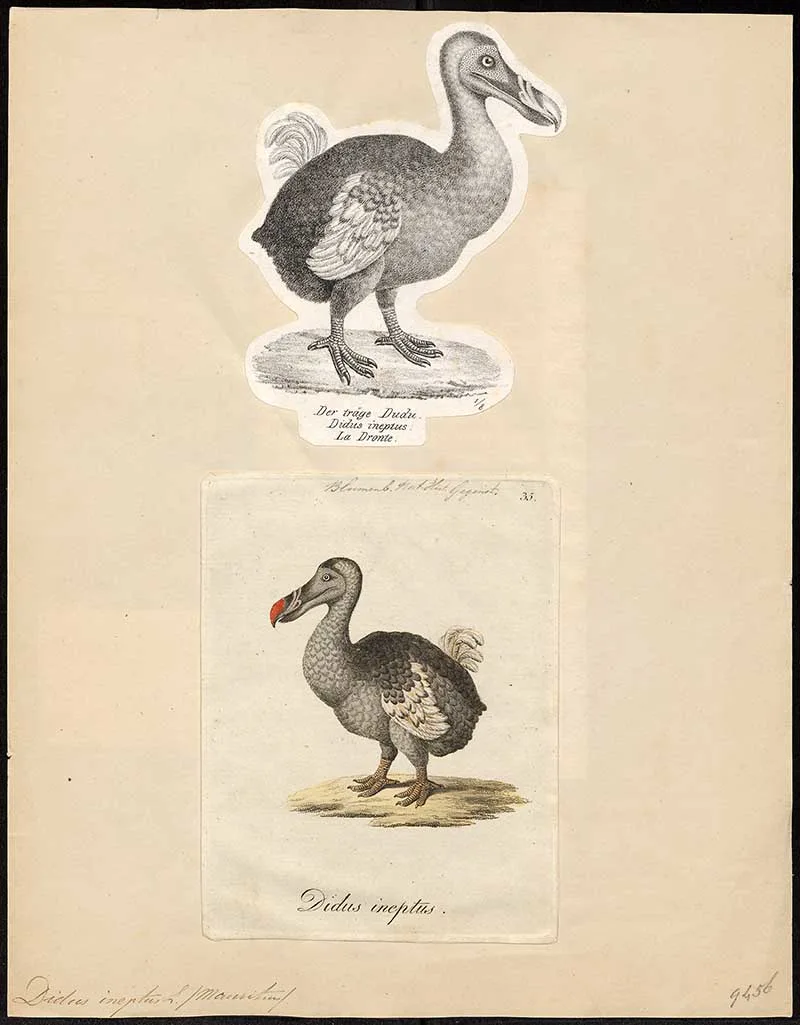
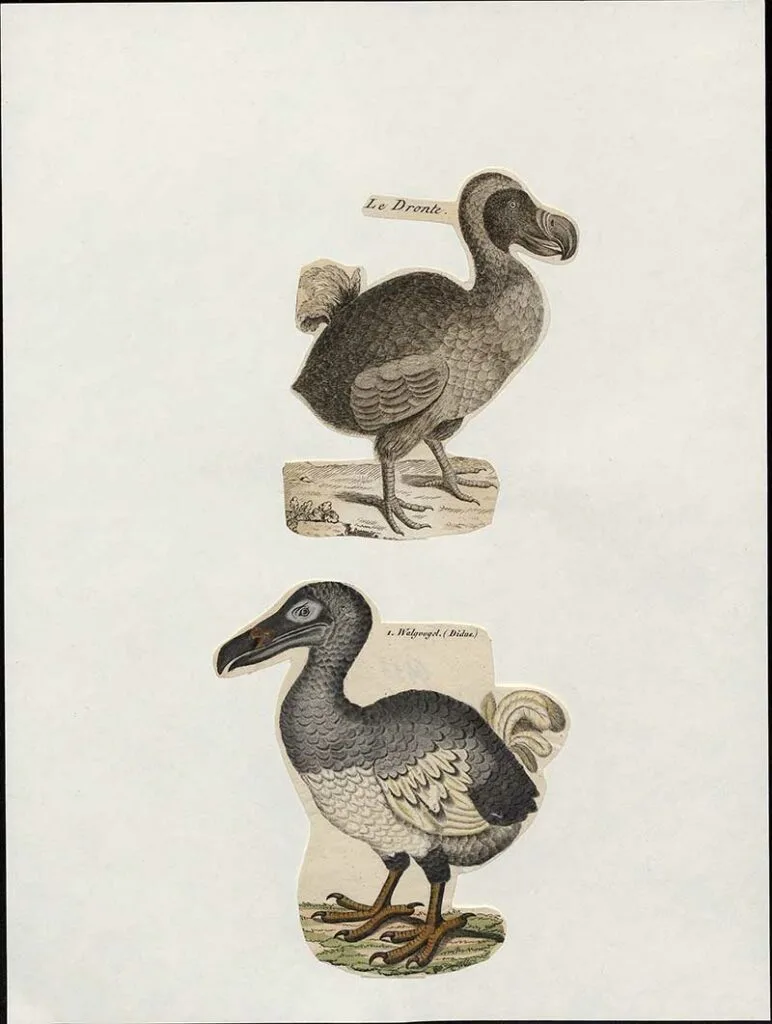
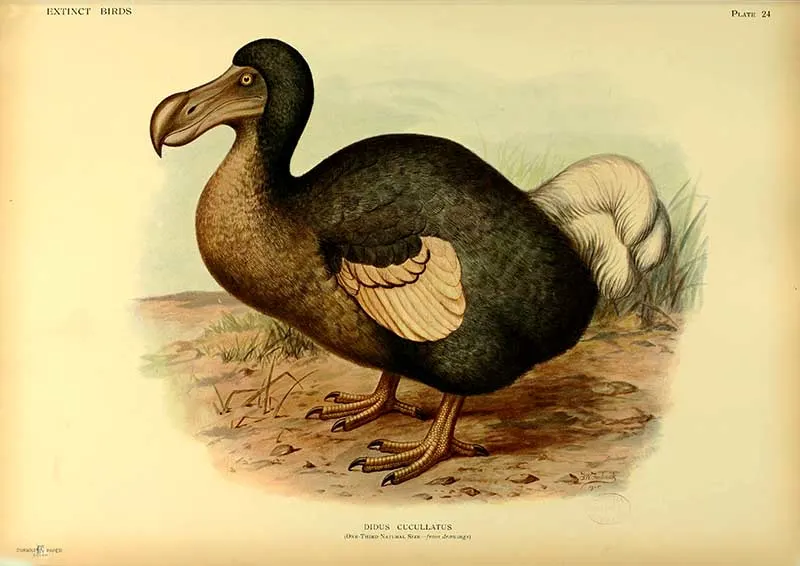
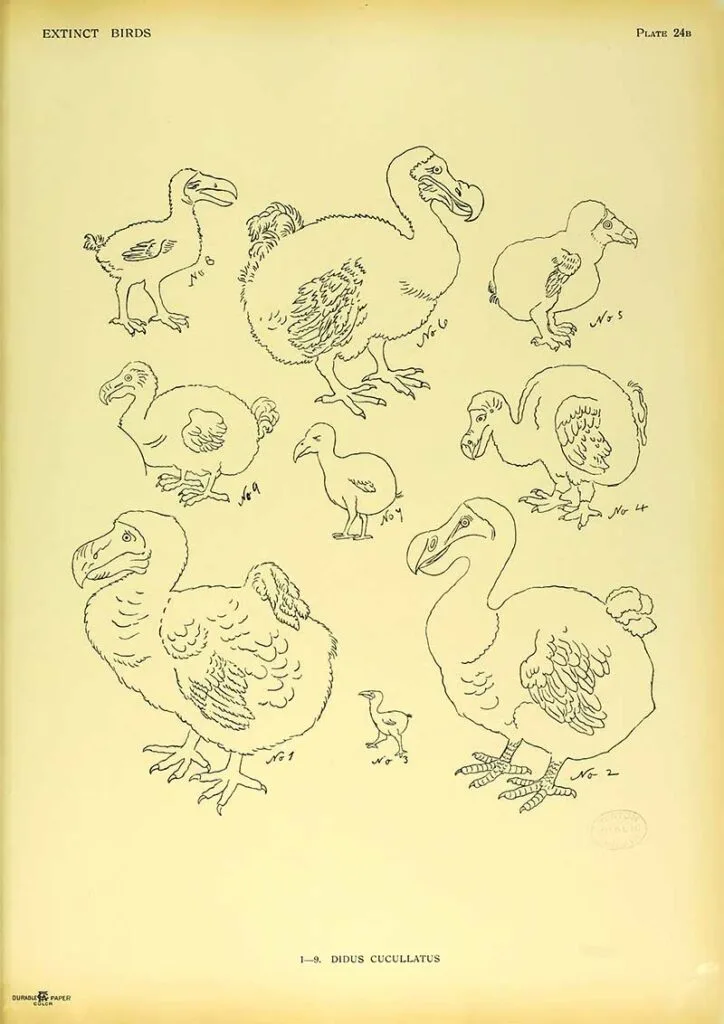
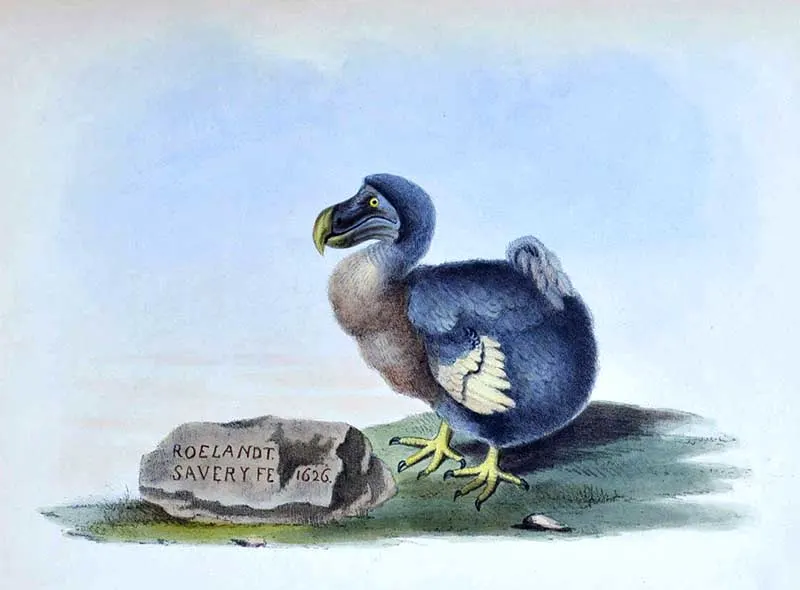
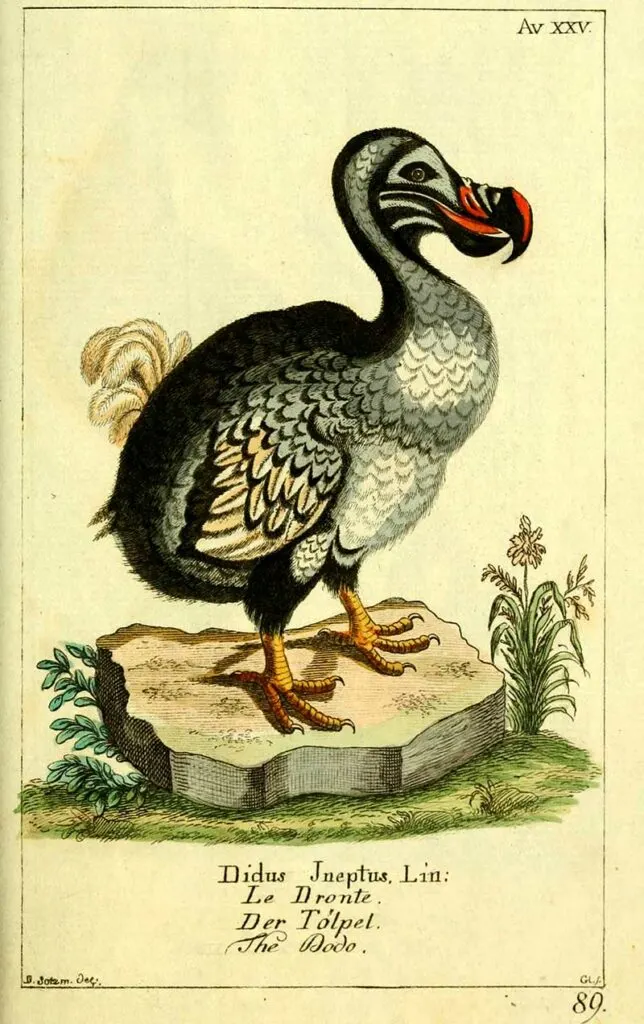
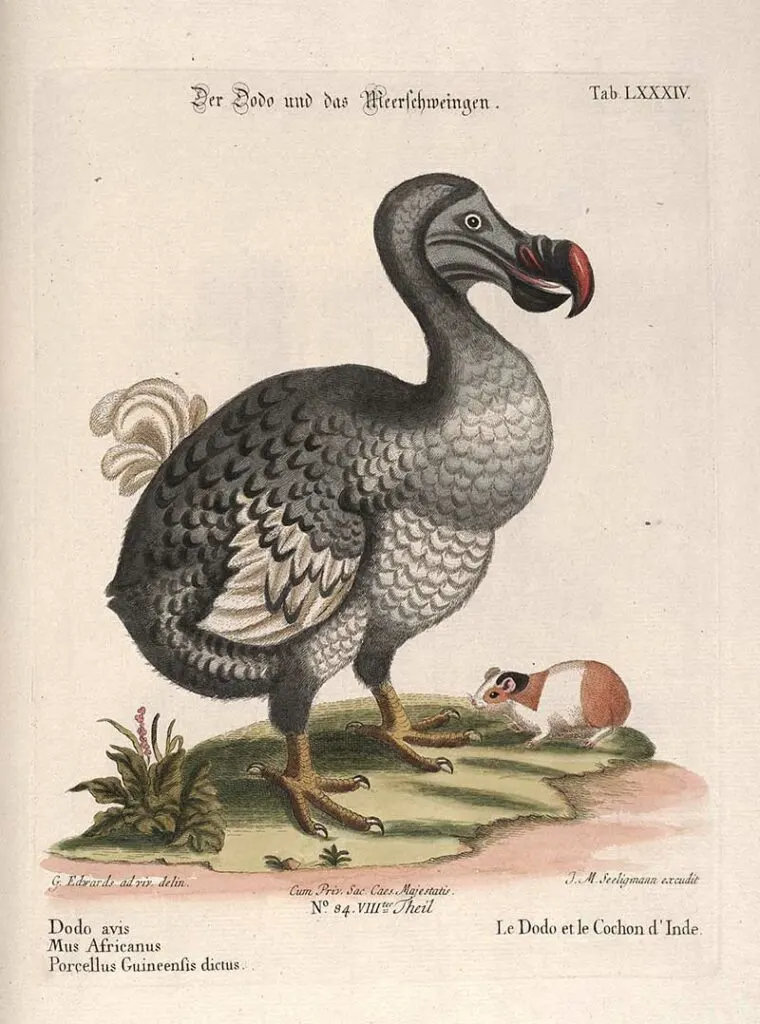
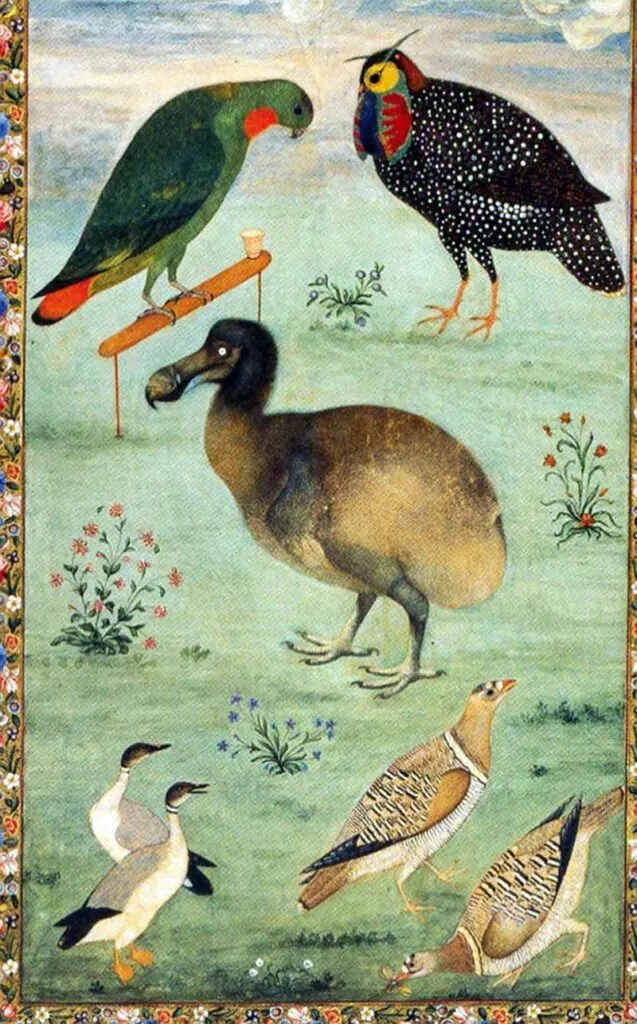
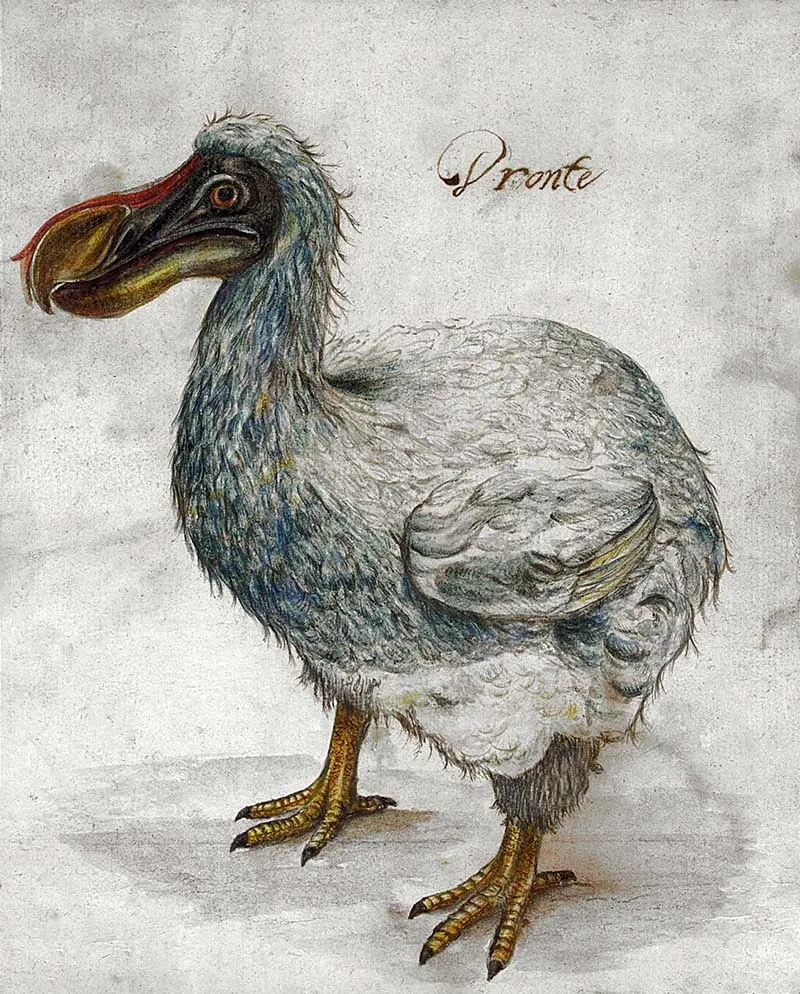
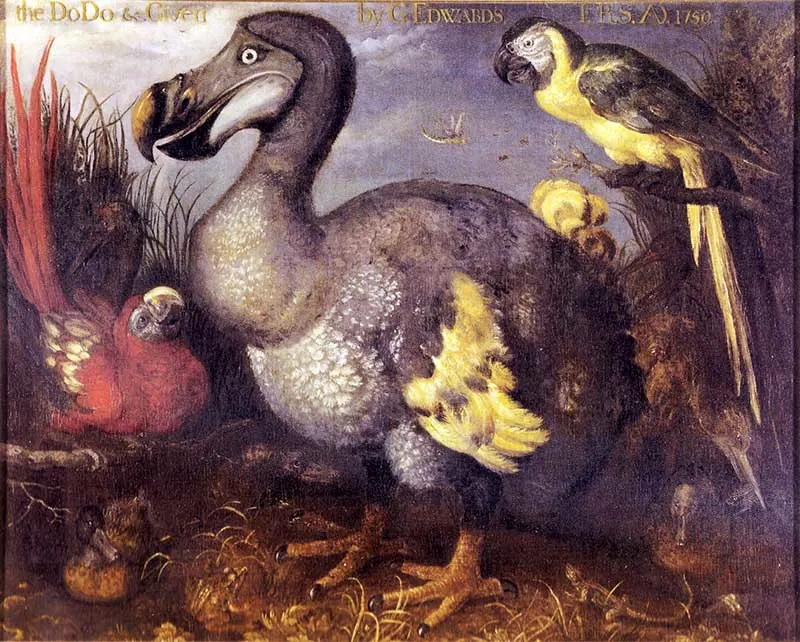
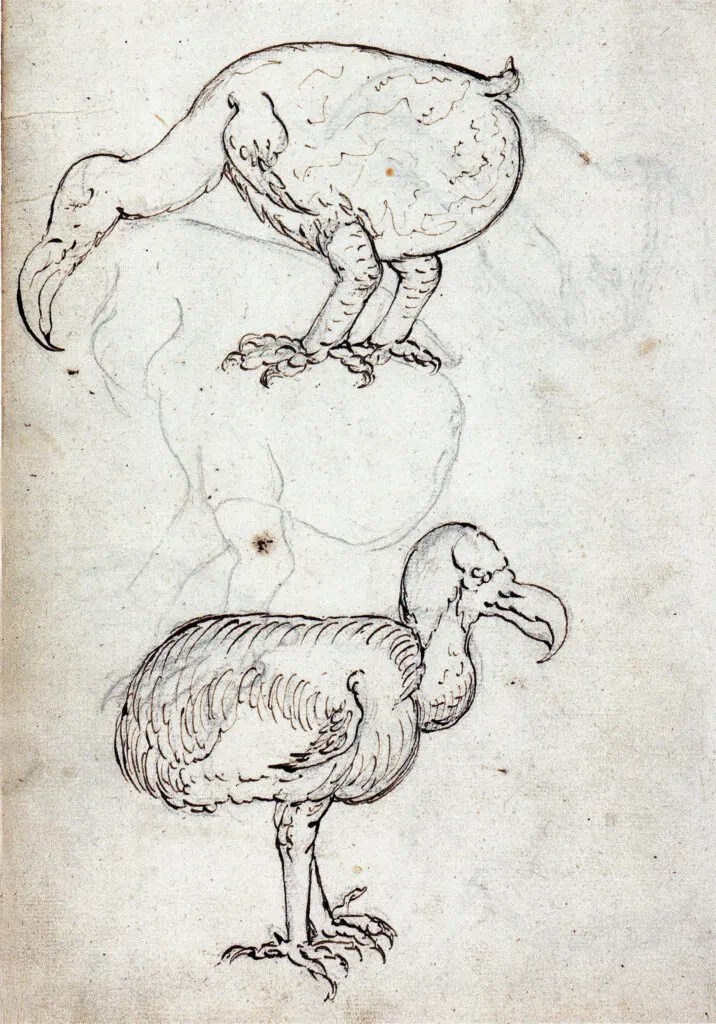
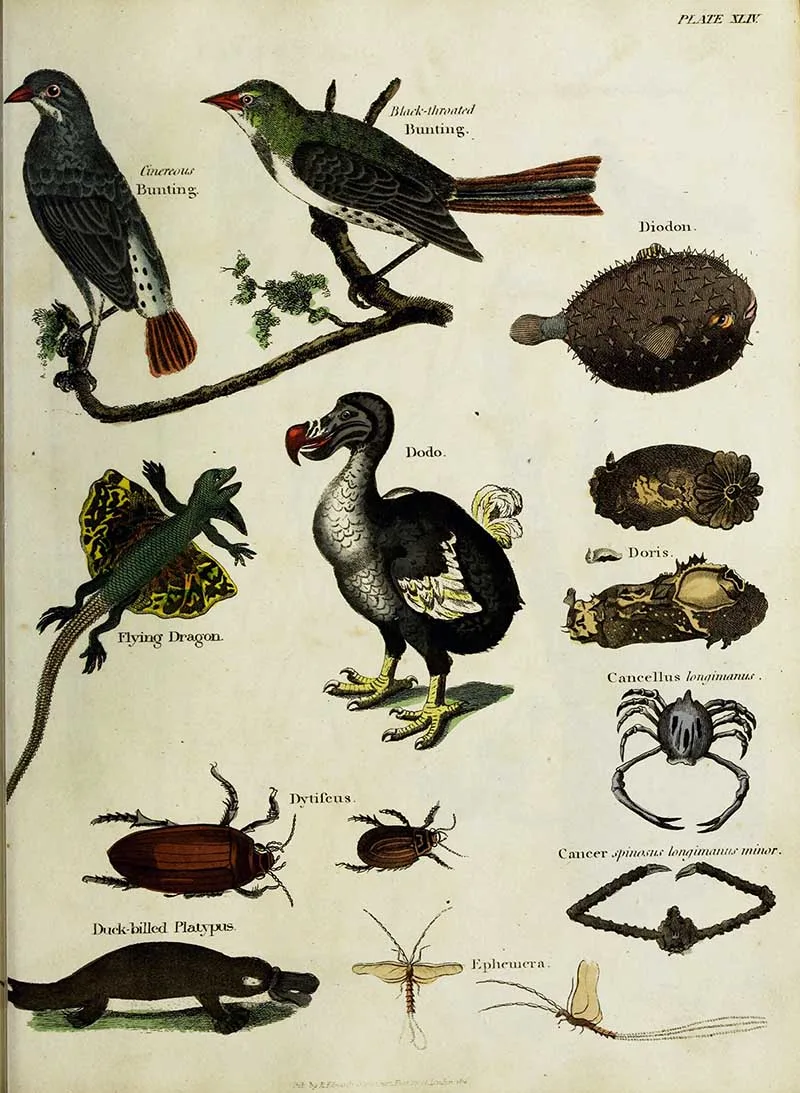
Rachelle
Thursday 11th of March 2021
Claire, these are some great drawings and paintings of the dodo bird. The 17th Dutch painting really brings out the feathers, and I also like the one that is dark and muted. Thank you for adding this informative post to the Friday with Friends link party!
claire
Friday 12th of March 2021
Thank you, it is such a fascinating bird with such a sad history.
Cecilia
Sunday 7th of March 2021
It is such a distinctive looking bird! Thanks for sharing at Vintage Charm!
claire
Sunday 7th of March 2021
Thank you, and it has an amazing history.
NINA LEWIS
Wednesday 3rd of March 2021
I love the French illustration the best because of its green and orange and black beak. You always share such delightful illustrations. I'm so glad you share them at our link party.
claire
Saturday 6th of March 2021
Thank you so much, the colors are great and add to the vintage look of these illustrations.